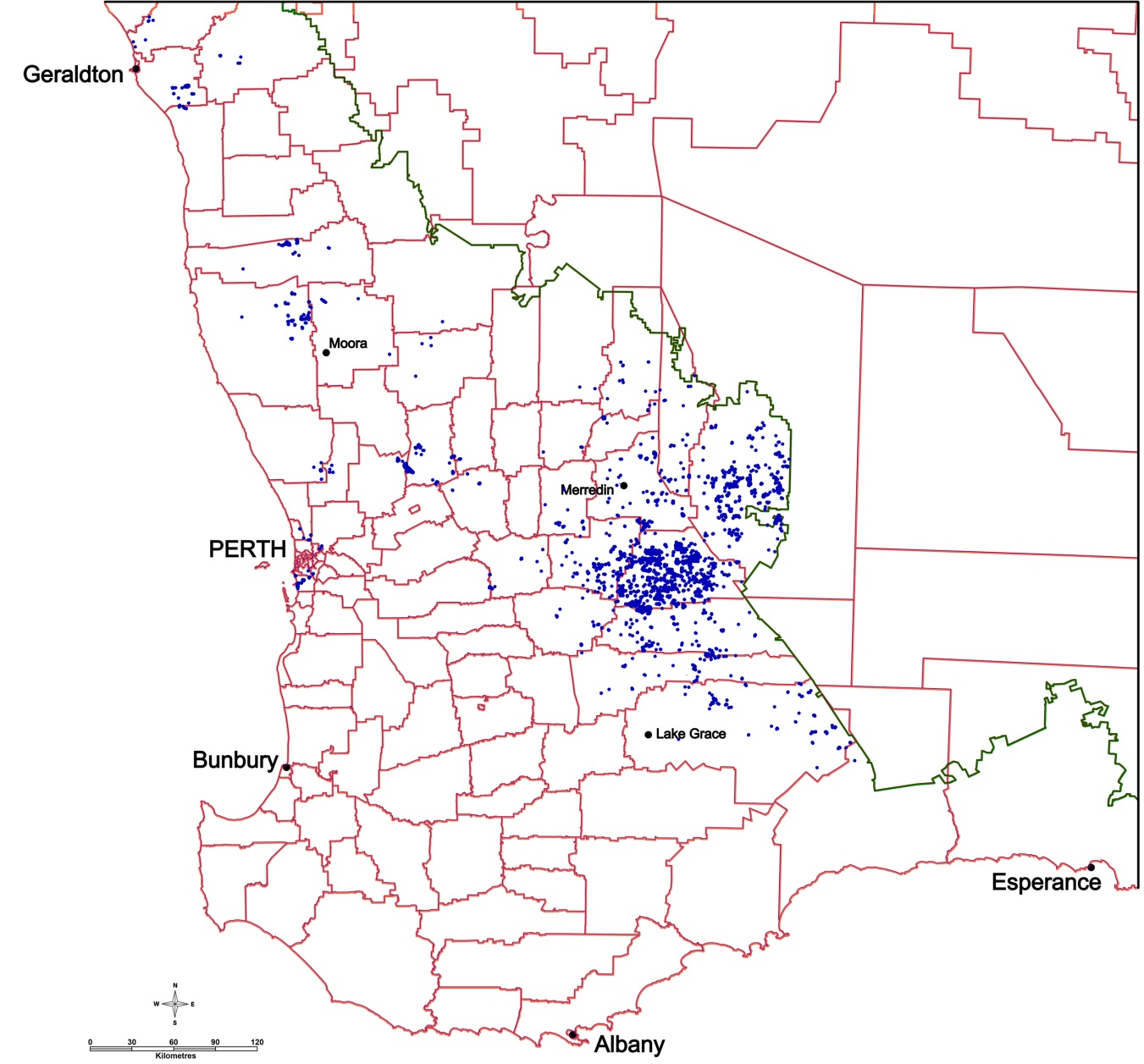2013/14 biosecurity programs
Contributions collected via the Grains, Seeds and Hay IFS were used to fund programs to control the spread of skeleton weed and eradicate three-horned bedstraw. The 2013/14 programs were delivered by DAFWA at a total cost of $3 208 523.
Skeleton weed control program
Skeleton weed (Chondrilla juncea L) is a pest of pastures, crops and native bush. It can severely reduce yields by successfully competing with crops and pastures for moisture, nutrients and light, and the plants’ tough wiry stems impede harvesting. The Skeleton Weed Control Program is a coordinated program aimed at controlling the spread of the weed, and provides benefits to owners/managers of both infested and non-infested properties.
The 2013/14 Skeleton Weed Control Program undertook ground searches covering 409 030ha. The total area infested with skeleton weed has reduced from 2518ha in 2012/13 to 1440 in 2013/14. Furthermore, the number of new finds was relatively low at 58, compared to 95 in 2012/13.
At the end of 2013/14, 940 properties were known to be infested with skeleton weed in the Western Australian agricultural area (Fig. 2). A total of 58 newly infested properties were reported, and the weed was eradicated from 44 properties.

The program allocated most of its budget to provide support to landholders in the form of search assistance; funding for Local Action Groups to implement local strategies to deal with skeleton weed; the provision of winter herbicide treatments and chemicals; and other support activities for infested properties.
Landholder auditing and compliance was another major part of the program during 2013/14. The IMC decision to make this a larger part of the program was influenced by the belief in providing value for money to the Scheme participants and accountability for the use of industry funds, as well as the IMCs commitment to minimising the spread of the weed.
The total cost of the 2013/14 program was $3 052 000.
The Skeleton Weed Program 2013/2014: Report to grain, seed and hay growers can be accessed from the IFS reports webpage.
Bedstraw eradication program
Three-horned bedstraw (Galium tricornutum) is a competitive climbing plant that can cause considerable yield loss in crops, and its seeds are contaminants of fodder and grain. Bedstraw is targeted for eradication in Western Australia — that is, any bedstraw plants found in the state must be destroyed.
Through the Grains, Seeds and Hay Industry Funding Scheme, bedstraw eradication activities were delivered on the three properties under quarantine. In conjunction with the landholders with the two largest infestations, the Program developed and implemented management plans that were tailored to each property. These plans, or ‘Approved Programs’, specified the management practices to occur on the quarantined areas, and were specifically designed to achieve eradication of bedstraw.
In early 2014, one property was released from quarantine. No further spread of bedstraw occurred within or from the two remaining infested properties. Herbicide treatments applied to the areas have prevented bedstraw seed production by destroying seedlings and mature plants. There are also encouraging signs that the soil-borne bedstraw seed bank is declining at both properties.
The total cost of the 2013/14 program was $156 523. This does not include any amounts of compensation — compensation was paid via the IFS rather than the program funds.
The Bedstraw Eradication Program 2013/2014: Report to industry can be accessed from the IFS reports webpage.
| Expense | Amount |
|---|---|
| Salaries, on-costs, overheads | $86 218 |
| Travel expenses | $3436 |
| Consumables - general | $1481 |
| Contract labour | $34 480 |
| Herbicides, fuel, oil | $24 476 |
| Other expenses | $6432 |
| Total | $156 523 |
